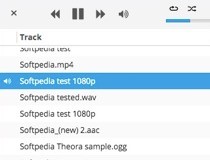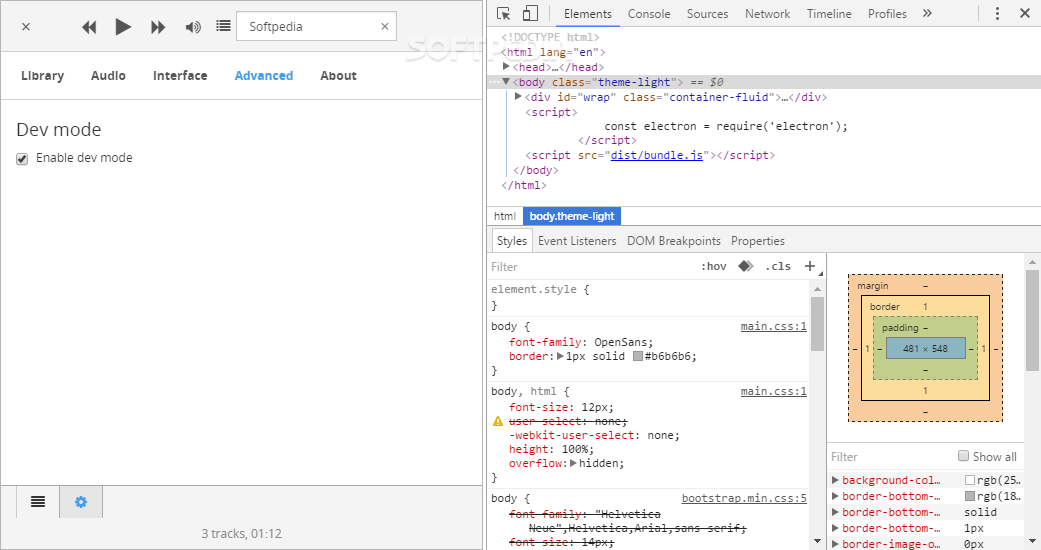

From here you can create playlists, as well as rename or delete existing ones. The app has a separate section dedicated to playlists (the ‘star’ icon).

PlaylistsĪny good music player worth its tunes has playlist support and Museeks is no different. To access the volume control simply click on the volume icon to reveal a volume slider. To the left of the seek bar you’ll find the obligatory options for looping (all, or a single track) and enabling/disabling shuffle. volume (l) and loop & shuffle icons (r)Ĭlick on the progress/seek bar to skip back or forward. The results field updates as you type, not at the end. Searching is fast and responsive, even on a large library. You’re stuck (for now) with the default alphabetical list. Clicking on them does nothing, so you can’t sort by genre or duration.

The section headers are purely informational. And this is sorted by artist, alphabetically. If you’re a fan of cover-art browsers or like to navigate your library using a tree structure, you’re in for disappointment. Click this to remove the track from the queue.

To remove a track from the play queue simply hover over its entry to show an ‘x’ icon. You can rearrange the play queue by drag and dropping tracks around. I’m not entirely sure if it tries to be smart about the tracks it chooses or not. The Play Queue auto-populates when you play a track, giving you an endlessly evolving playlist of sorts. Here’s where things get obvious: to play a song you simply double-click on the track entry in the list, or select it and press the play button on the toolbar. Once done you are ready to roll! Playing Music This can take a while depending on size of collection, so if you have a lot of music, be prepared for a short wait while it does its thing. To add music click on the Settings icon and, under the Library section, click on “Add folder(s)” to add a music source (e.g., your ‘music’ folder).Īs soon as a location is added the library detection/reading kicks in. These let you switch between the main library view, the playlists section, and the settings pane.
MUSEEKS LOGO HOW TO
At first blush, with no toolbar menus available in the app, it’s not clear how to go about adding music to the player.Īt the very bottom-left of the app sit three icons. Museeks does not prompt you to add music nor guide you on how to do it. Not so simple is the first run experience.
MUSEEKS LOGO DOWNLOAD
Running Museeks on a modern Linux distribution is easy: you download a pre-compiled binary, extract, and double-click on the ‘museeks’ runtime inside the extracted folder. If you prefer Clementine, Rhythmbox or Spotify you can keep using them! Museeks Getting Set Up Library, Playlists, Settings He also made it open-source so others could use, learn and build on it.Īs ever with apps we feature on this website, you’re under no obligation to download and use this. He made this app to scratch his own itch. And It was a good opportunity for me to drop PHP to JS as a full-stack dev.” The developer behind Museeks says he made the project for: “… for multiple reasons, first as a proof of concept because I was needing a minimalistic audio player, and I couldn’t find one on Linux. We don’t “need” more than one web browser, toolkit or Linux distribution - but we have them and we’re all grateful for it. It also happens that the desktop music player is an app category most of us use and most of us have opinions on. “Need” is too obtuse and subjective, and can rarely be used to qualify software. Museeks 0.6.0 offers the following core feature set:īefore we look at how Museeks works I’d like to offer a few thoughts to those of you gearing up to ask if we really need another music player.
MUSEEKS LOGO MAC OS X
Pre-compiled binaries are currently available for Windows, Mac OS X and Linux. The app features a clean, polished interface and, like any good music player should, it can play a range of popular music formats, including the ubiquitous. Meet Museeks, a new cross-platform desktop music player written in Node.js, Electron and React.js.


 0 kommentar(er)
0 kommentar(er)
